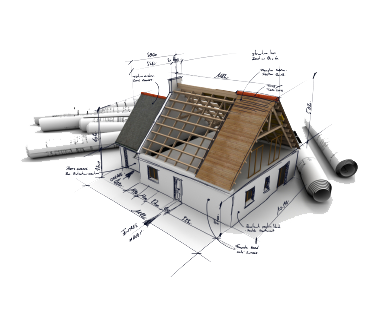
Consider the following in developing your solar HVAC design:
- Thermal performance of your house
- Amount of solar power you can produce
- Your preferences around heating and cooling methods
- Heat recovery ventilation
- Resale value
- Your project budget
All-electric House Design
Take a holistic approach to the solar HVAC design for your all-electric house.
Let Hydrosol assist with your heating, ventilation and cooling design to maximize the benefit from your solar power. Consider also the thermal performance of your house.
For solar HVAC and water heating designs to work effectively with your solar power, your house needs to be energy efficient.
Undertake an indicative thermal performance assessment (Star Rating) as soon as possible in the design process. The initial result may cause you to revise your building design.
Thermal Performance Design
Seek advice on how best to achieve the minimum 6 Star thermal performance rating required. Consider these important factors because they affect your thermal performance assessment significantly:
- Location climate (whether your house is being designed mainly for heating or cooling)
- House orientation to the sun and prevailing wind
- Shading in winter and summer
- The internal mass of your house
- The amount and type of windows, frames and glazing
- Insulation of ceilings, walls and floors
- Thermal bridging
- Air tightness
- Ceiling fans
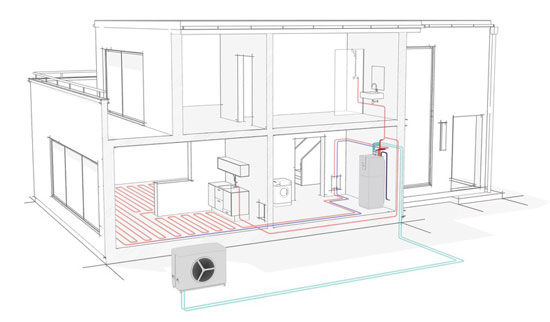
Hydronic Heat Pumps and Air Conditioning
Consider whether a hydronic heat pump and/or air conditioning is better for your solar HVAC design.
If your house is well sealed, you may require heat recovery ventilation as well.
Hydronic heat pumps are a good option for southern or inland Australian locations with cool winters and low humidity. This is where heating is required more than cooling. Heat pumps can be powered by your solar power and run in reverse for hydronic cooling.
Air Conditioning
Air conditioning is a better option for northern Australian locations where cooling is needed more than heating and humidity is an issue. Air conditioners can also be powered by your solar power and run in reverse for hydronic cooling.
A combination of heat pumps and air conditioners can make good sense, paticularly for two storey dwellings in southern locations.
Click to read more: Which Air Conditioning System is Best for me?
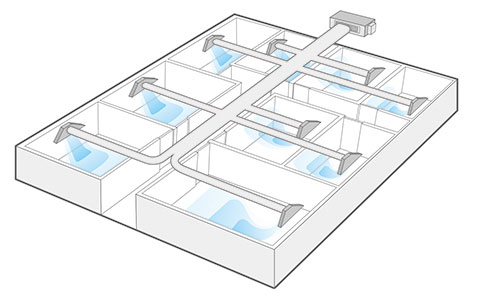
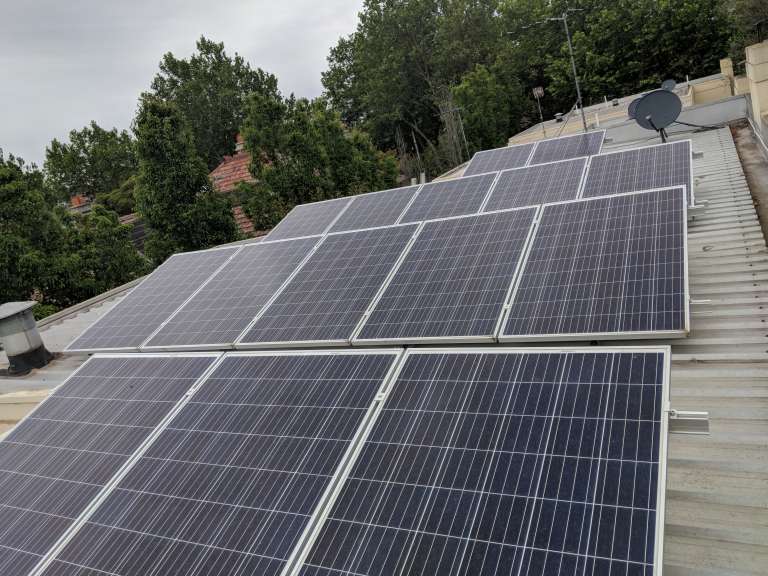
Solar Power
Look at adding solar panels if your roof has unshaded sunlight and you can orient solar panels to the north, west or east.
Heat pumps are ideal with solar power because they typically deliver heating or cooling 4 or 5 times greater than their power they use. Incorporate high internal building mass into your building design. This allows heating or cooling generated during the day using your solar power to be stored for release during the evening.
Your heat pumps and air conditioners can largely be run from your own solar power if you have good home design.
Click to read more: Managing Your Solar Power
Energy Recovery Ventilation
Explore adding heat recovery ventilation (HRV) if your home is designed to a high energy efficiency standard.
New builds and renovations with 6+ Energy Rating are well insulated and well sealed. This makes a strong case for adding HRV ventilation to keep your home feeling fresh and airy without opening windows.
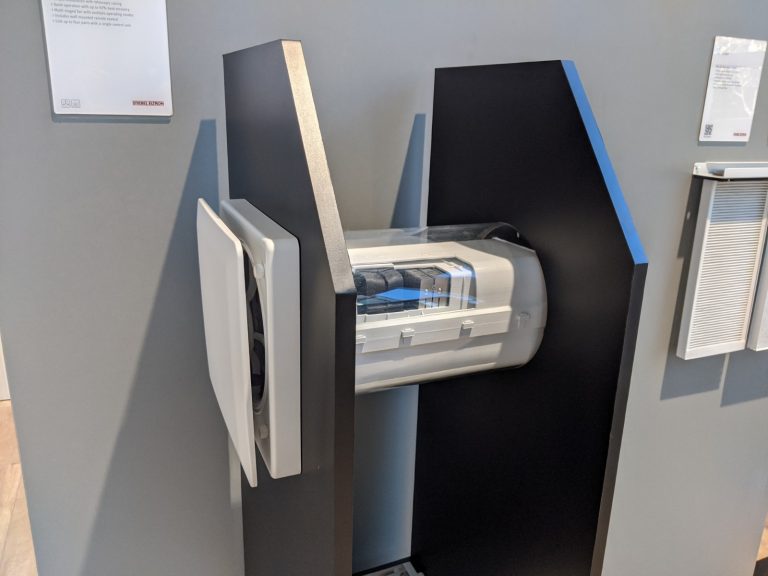
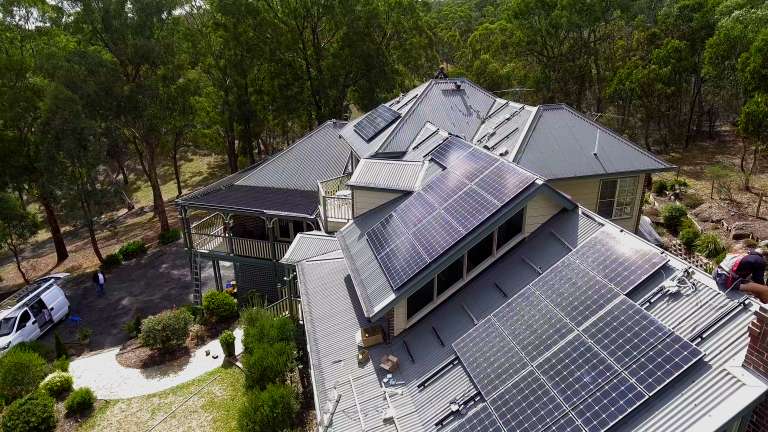
Off-grid Homes
You need to consider more carefully your heating, cooling and water heating needs if you have an off-grid home. This is because heating, cooling and water heating represent about 70% of your home’s energy needs.
If you have plenty of wood available, then you may want to use that for heating. However, heat pumps can provide a reliable back up for wood heating. They will standby and automatically switch on to add to the heating load as required then switch off. Also, their reverse cooling ability provides very efficient and low cost cooling in summer, particularly if you run them with ceiling fans on.
Pool and Spa Heating
Consider a heat pump for heating your pool or spa. They do not take up roof space that could otherwise be used for solar panels. Also, they can extract heat from the air even when it’s cold, raining or dark. They are ideal for heating during shoulder seasons to extend your swimming season.
Click to read more: Astral Pool and Spa Heat Pumps
Your hydronic heat pump may be suitable for heating your pool or spa if your water volume is less than 30,000 litres. Your hydronic heat pump will need a suitable heat exchanger to separate the corrosive pool water from your hydronic heat pump.
Click to read more: Elecro Pool Heat Exchangers
If your pool is larger than 30,000 litres, then a dedicated pool heat pump will be more appropriate.
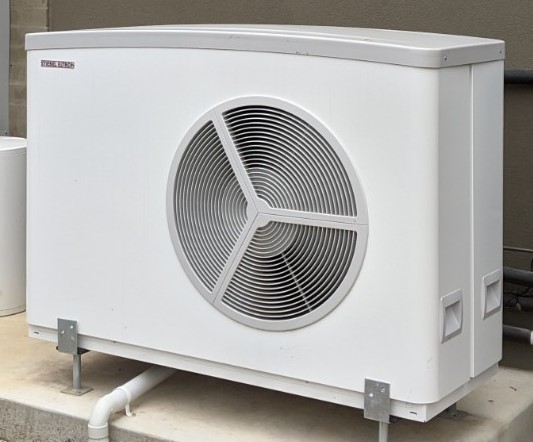
Explore your needs
Explore your needs before moving to a draft design. Then a final design and installation plan will be developed for your build. See our process map below.
Send us information about your project, your preferences and your building plans. We will be happy to review this and provide an indicative quote. We can also make a referral to G-Store to look at your solar power requirement. These are complimentary services we offer.
Quick Quote
Use our Quick Quote configurator. This will give you a ballpark idea of the cost of supply and installation of a quality system. Contact us to explore different approaches that can vary this pricing.
Consulting Service
Contact us to look at your specific project needs. Our consulting service involves the following:
- Review of your building plans and preferences
- Review of your heat load
- Discussion
- Recommendations and Indicative Quote
- Contractor referral
The referral includes your Indicative Quote to be used as the basis for your Final Quote.
Our Design Process
Understanding your needs
We know that every client and project is different so we start by understanding your needs, priorities and vision for your build.
We then develop an indicative supply and installation quote to consider taking account of your preferences, budget, building design, site issues and timing.
Installation
We work with the best and most experienced installers. The installation process starts at the beginning of the build with project planning and design work, followed by the rough-in of plumbing pipes and electrical cables. Towards the end of the build, equipment is installed and connected to power and plumbing.
After Sales Support
We recognise that you have made a significant investment in heating, cooling, ventilation and/or water heating and that you want your system/s to function optimally for many years.
Our equipment suppliers are all leading companies with service desks for support. They will be happy to deal with any warranty issues.
Consider a service plan with your installer to ensure optimal performance of your system/s.






